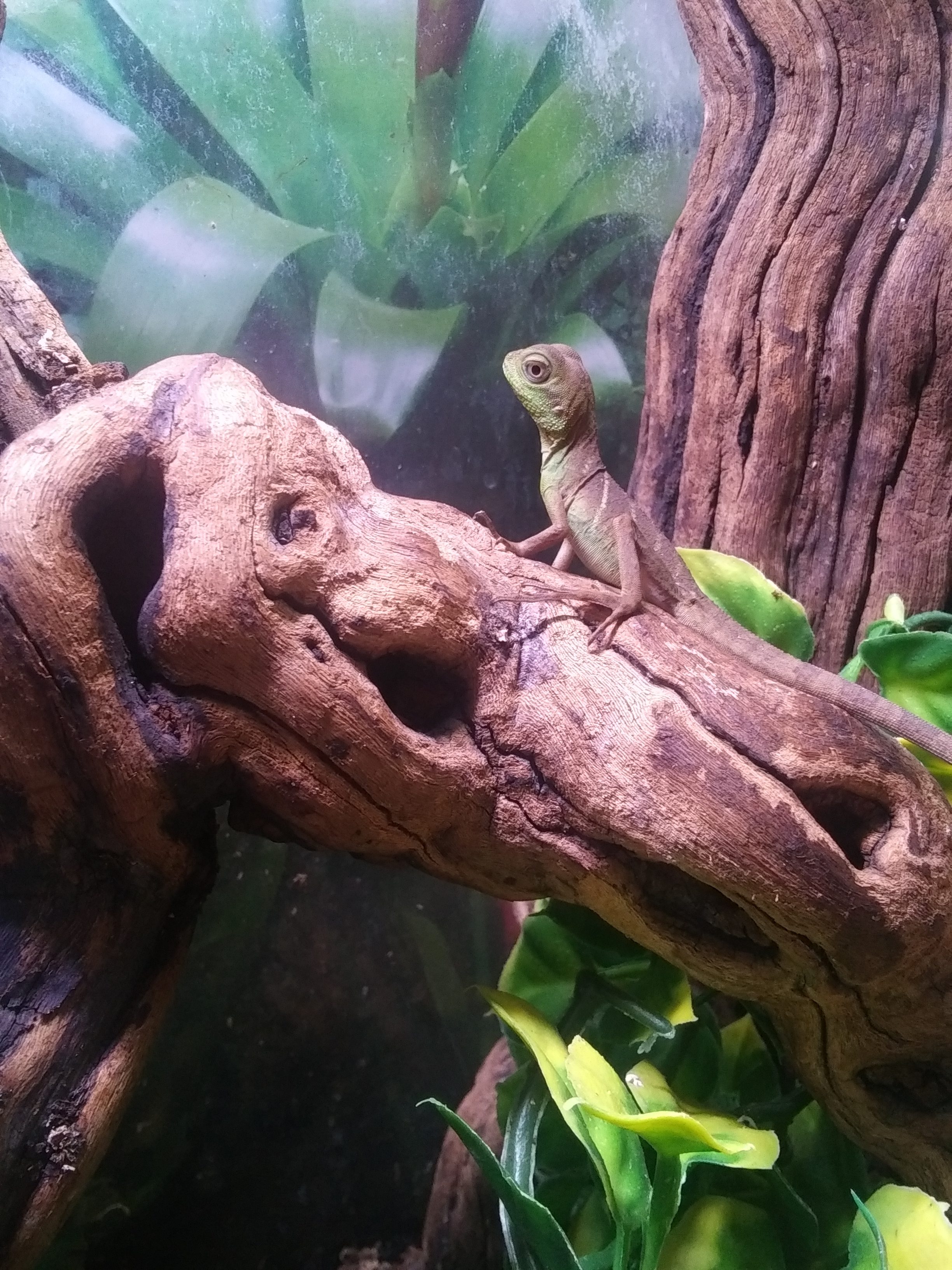The chinese water dragon, Physignathus cocincinus, is also known as the Asian or green water dragon. They are native to mainland China, some of the islands of Indonesia, much of southeast Asia, Thailand, Cambodia and Vietnam. In the wild they live near flowing creeks, small ponds and other bodies of fresh water in forested areas, and are frequently found lounging on tree limbs high above water as they are also arboreal. When they feel threatened they will nose-dive straight down into the water and remain hiding there until the threat has passed, sometimes for upwards of 25 minutes.
A mature male water dragon is bright green with black speckling along with a throat that can range from blue, red, orange, yellow, or any combination of these colors, making them a beautiful and highly sought after lizard for hobbyists. Females boast a beautiful emerald green coloring with blue striping along the back and bright pink throats. Juvenile water dragons exhibit an orange-yellow hue beneath the two front “armpits,” and for males the head crest and spines along the back will grow larger with age. The throats of males turn from white to a blue or orange color, depending on individual genetics, while females retain white throats through the sub-adult stage. A female’s head crest appears underdeveloped compared to a male’s, and the spikes are appear stubbier than the male’s sharper spikes. For both males and females their very long tails can make up nearly two-thirds of their total length, averaging around 3 feet for males and 2½ to 3 feet for females.
Temperatures need to be warm for these lizards. For babies this should include a basking spot of 95 to 101 degrees with an ambient temperature in the mid 80s. At night, temperatures may dip to the low 70s, but not any cooler than that because dragons could become sluggish and less likely to eat regularly. For juveniles and adults their enclosure should have a basking spot of 120 degrees with an ambient temperature in the mid 80s as well. In addition to heat lamps or ceramic heat emitters, water dragons require UVB lightingto prevent disease and to ensure they can digest their food properly and to ensure a healthy growth rate.
Their enclosure should include lots of vegetation (either artificial or nontoxic live plants) along with many branches and climbing vines. They also do well with a water feature of some sort, whether a larger water dish that they are able to fully submerge themselves in, a ‘swimming pool area’ or even a waterfall.

